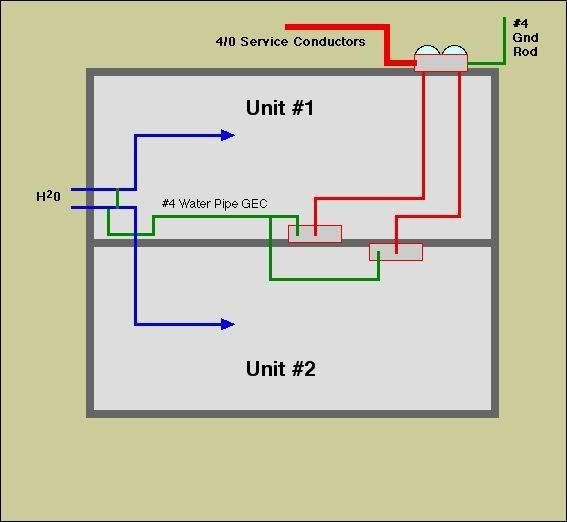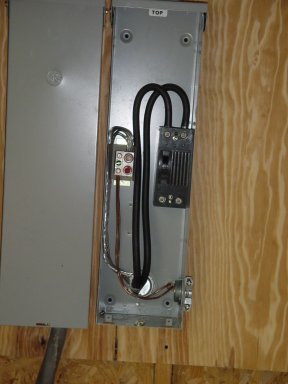Just wondered what everyone else is required to do for connecting to the GEC in a duplex. Depending on the AHJ, there are 2 configurations here.
1) Ground rod connected to neutral at duplex meter base.
GEC run to one panelboard neutral bus bar from water main, and the other panelboard has a short lenght of copper wire brought out from neutral bus bar and split bolted to the GEC going to water main.
2) Same as above, but compression connector used for connection instead of split bolt
3) Separate GEC's run from each panelboard to water mains
In all scenarios, the GEC hits both water mains.
Anyone else use the same methods? The main reason I'm asking is that one AHJ requires the compression connectors instead of split bolt connectors for tapping the second panelboard to the GEC. Is this required or is the splitbolt acceptable?
I understand where the irreversible connection requirement comes from, which as I read it is, in the 2002 NEC, 250.64(C) and 250.64(D). Am I missing something that would allow a split bolt type of connection?
I assume this is to prevent tampering. However, in a dwelling at least, what is to prevent the homeowner or a plumber from disconnectiing the GEC at the water main and not hooking it back up? Or the GEC to the supplemental ground rod which uses a clamp type connector?
Any opinions on this? Thanks.
John
1) Ground rod connected to neutral at duplex meter base.
GEC run to one panelboard neutral bus bar from water main, and the other panelboard has a short lenght of copper wire brought out from neutral bus bar and split bolted to the GEC going to water main.
2) Same as above, but compression connector used for connection instead of split bolt
3) Separate GEC's run from each panelboard to water mains
In all scenarios, the GEC hits both water mains.
Anyone else use the same methods? The main reason I'm asking is that one AHJ requires the compression connectors instead of split bolt connectors for tapping the second panelboard to the GEC. Is this required or is the splitbolt acceptable?
I understand where the irreversible connection requirement comes from, which as I read it is, in the 2002 NEC, 250.64(C) and 250.64(D). Am I missing something that would allow a split bolt type of connection?
I assume this is to prevent tampering. However, in a dwelling at least, what is to prevent the homeowner or a plumber from disconnectiing the GEC at the water main and not hooking it back up? Or the GEC to the supplemental ground rod which uses a clamp type connector?
Any opinions on this? Thanks.
John




